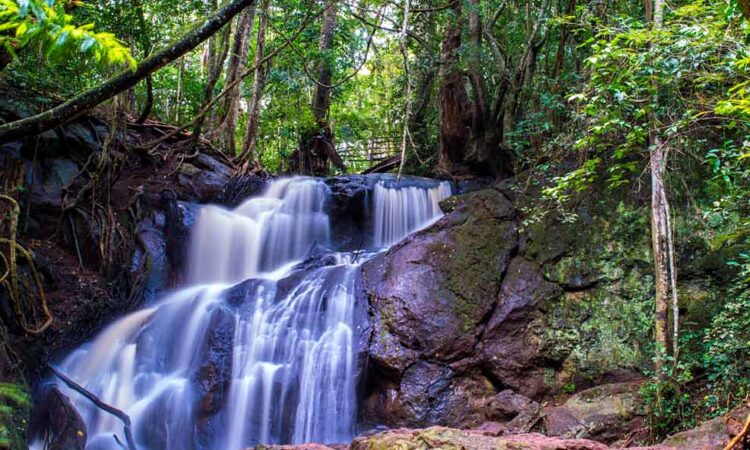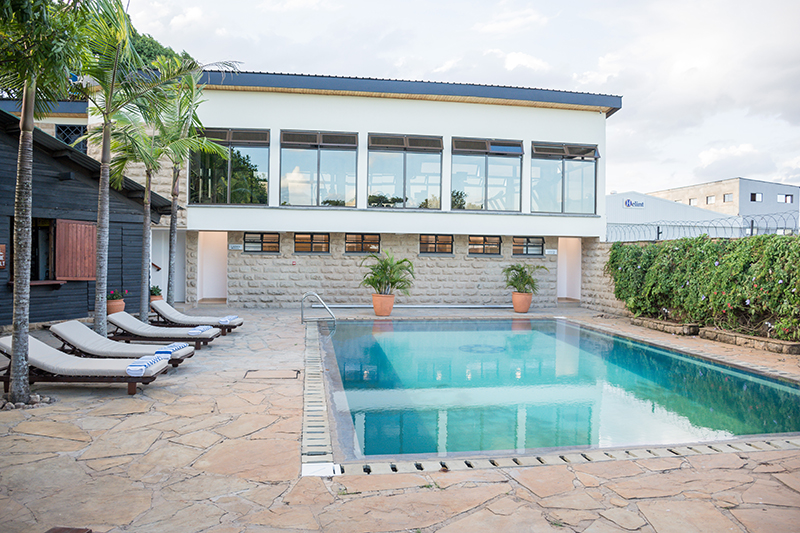Karura Forest National Reserve : One of the biggest forests in the world to be found in a city’s outskirts, the Karura Forest Reserve is over 2500 acres in size. The area where the reserve is situated has historically been the scene of numerous conflicts, and it now represents Kenya’s campaign against land grabbing. Thanks to the efforts of the Friends of Karura Community Forest Association and the Kenya Forest Service, the reserve was granted protected status and acknowledged as a vital natural resource in Kenya’s urban environment.

You may get away from Nairobi’s busy city life and find a natural green area within a few kilometres for jogging, walking, or just lounging peacefully with a book or picnic. The reserve’s natural value is complemented by its role as a model for national philanthropy and corporate social responsibility, both of which have contributed to the land’s ongoing conservation. The Green Belt Movement was founded by the late Dr. Wangari Maathai, a Nobel Peace Prize Laureate, and is credited with its success.
There are numerous historical and ecological sites of interest within the reserve. You can still see the ancient chimney from the Central Bank’s incinerator, which was used to trash decommissioned cash on the premises in the 1990s. There is an abandoned quarry at Lily Lake, and the reserve’s hallowed caves served as hideouts for Mau-Mau liberation fighters. There are also not many archaeological sites in the reserve, some of which have just been dug up and the results are currently being analysed.
Other places to visit in Nairobi
The Nairobi Gallery
The Nairobi Gallery, a national landmark located in the centre of Nairobi, features artwork by both domestic and foreign artists. The Native Ministry, the government organisation in charge of keeping track of births, deaths, and marriages, occupied the Victorian-style building when it was constructed in 1913. A colonial courthouse and the Nairobi office of the province commissioner were also located on the site prior to Kenya’s independence.
The National Museums of Kenya finished the building in September 2005, it now houses a large collection of both modern and historical artwork such as the collection of Josphat Murumbi, Somali and Gabra wooden jugs, African postage stamps, Rendille and Karamojong folk art, and numerous other exquisite items. Kenya safari suggests combining the National Gallery trip with a visit to the National Museum of Nairobi.
The Kenya National Archives
The Kenya National Archives is a discerning local attraction in Nairobi to spend some time perusing the exhibits and possibly even conducting some of your own research with the assistance of an Kenya safari tour assistant, whether you are a research enthusiast or simply a truth seeker and lover of art, history, and culture. The Kenyan Parliament established the Kenya National Archives in 1965 to conserve important national and public records and a collection of African arts, including basketry, ceramics, traditional weapons, masks, ornamental art, sculptures, paintings, beadwork, textiles, and photography.
The structure, which was built in 1931 to house National & Grindlays Bank’s Nairobi headquarters and was regarded as one of Nairobi’s most recognisable landmarks at the time, is part of the site’s historical preservation efforts. The records, reports, and diaries of the Church Missionary Society from the 17th century are among the oldest and rarest documents in the repository. The Joseph Murumbi Gallery, the greatest collection of Africana on the continent with over 50,000 publications, papers, and artefacts, is a noteworthy feature of the archives. The African Heritage House’s Alan Donovan art collection was added to the archives in 2008, and a second gallery features a historical collection of Kenyan artefacts from the pre-colonial era of 1890 to the present.
African Heritage House
American Alan Donovan, co-founder of the African Heritage Pan African Galleries, designed the African Heritage House as a side project. The house was inspired by traditional mud house construction methods used in Africa, and the result has garnered international attention, including an Architectural Digest magazine feature. The home, which has a view of Nairobi National Park, is available for overnight stays, conferences, conferences, and public tours.
The African Heritage House is a fascinating and surprising method to learn about Africa’s indigenous peoples. In addition to the house’s architectural importance, Alan has gathered artwork and artefacts from all around Africa and has them on display inside his private home. The House reservations are made in advance through Kenya Safaris, art and craft enthusiasts can also spend the night at the house.
The Aero Club of East Africa
The Aero Club of East Africa is situated at Wilson Airport just outside of Nairobi’s central business district, was established on July 31, 1927, with the goal of “promoting, encouraging, and regulating aeronautics in Kenya.” The club also provides advisory services to governmental bodies. The Aero Club of East Africa arranged yearly flying safaris with Kenya Air Force personnel from 1964 until the late 1970s. By giving pilots, engineers, and aviation enthusiasts a venue to congregate and exchange knowledge and anecdotes, the Aero Club of East Africa is still celebrating aviation in Kenya today.
Along with providing basic flying lessons, the club also acts as a voice for the aviation community on safety and other aviation-related problems and sponsors contests, air shows, crop spraying and skydiving demonstrations, safety seminars, navigation training, and much more. A tour of the club with kenya safari allows you to enter many of the most notable buildings that the club uses, including the 1956-built Secretary’s House, the hangar, squash courts, Daddy Probyn Bar and numerous other historic facilities.

The Nairobi Railway Museum
The Nairobi Railway Museum, which is situated at the northwest end of Nairobi Station, provides information about the historical and economic significance of rail travel in Kenya. The railway was a major factor in the founding of the city of Nairobi. The National Museum of Kenya currently oversees the museum, which was time-honoured in 1971 by the East African Railways and Harbour Company. It contains records and artefacts related to East African railways, including a collection of steam locomotives, rolling stock, miniature exhibits, models, and numerous other items.
The museum has four parts which include the main gallery, theatre, outdoor display area, and museum resource centre. East African Railways’ company crests are displayed in the main gallery. These include the most well-known Uganda Railways, Tanganyika Railways, Kenya Railways, and East Africa Railways. The main gallery also features original railway blueprints, construction models and smaller items such as a steam-operated bell, oil-burning headlamp, trolley bicycle, Bombay lounge chair, tableware and a bench seat used by famous travellers like Theodore Roosevelt and the Prince of Wales. The outside space contains several carriages and Beyer-Garratt metre gauge locomotives. Kenya trip recommends including the Nairobi Railway Museum on your schedule for your city trip.


